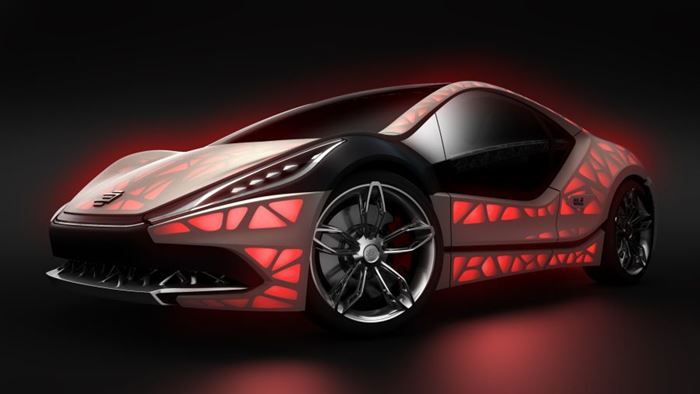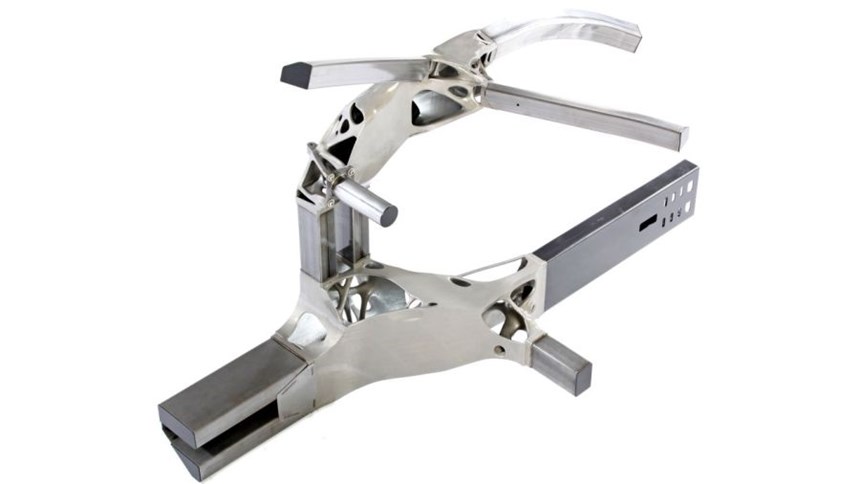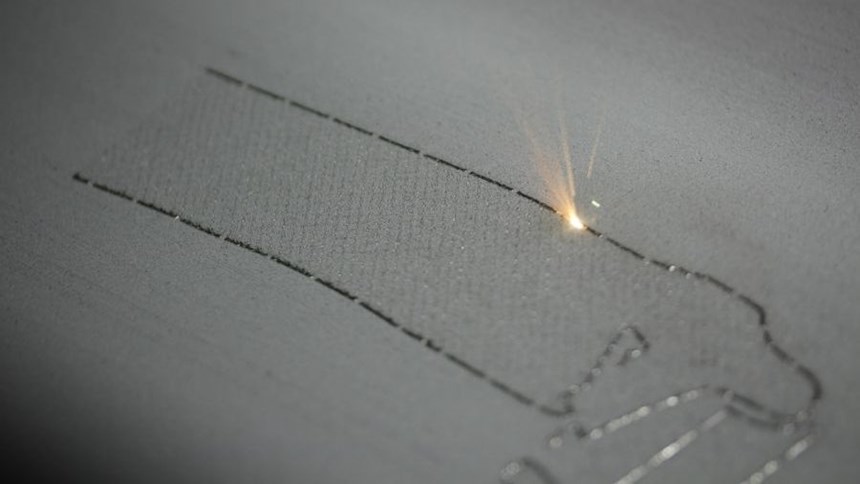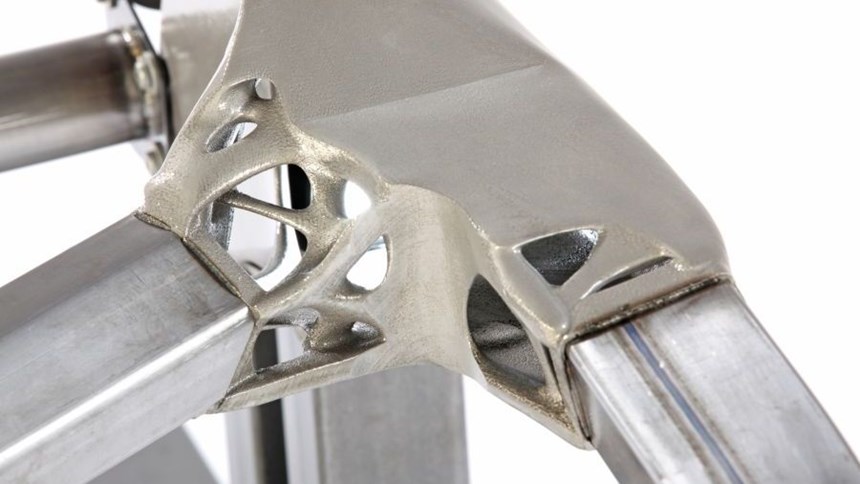Modular, Lightweight Car Design Made Possible through Metal AM
The concept car’s frame is built on load-optimized nodes that could only be made with additive manufacturing.
Share
Read Next
The traditional model for automotive manufacturing involves years of development from design concept to large-batch production. A joint project that relies on additively manufactured parts jettisons this model, seeing a coming demand for more flexible vehicle designs that will need to be produced in smaller batches. Together, EDAG Engineering Gmbh, Laser Zentrum Nord Gmbh, Concept Laser GmbH and the BLM Group created the EDAG “Light Cocoon,” a compact sports car built on a modular vehicle concept that is designed to be not only fast and flexible to produce, but also lightweight and optimized to load requirements.
The Light Cocoon features a branch-like metal spaceframe covered by a weatherproof textile that forms the outer skin of the vehicle. EDAG Engineering Gmbh devised and optimized the car’s frame, which consists of additively manufactured metal “nodes” joined together with cut and bent steel profiles. The body nodes are topologically optimized to enable the lightest construction possible for the required load, resulting in open, webbed designs said to use material only where necessary. (See the second and fourth photos in the slideshow above.)
According to EDAG, the frame is lighter than a traditional one, but it still meets the requirements for structurally relevant components in an automobile as validated by the company’s CAE team. Because the nodes are additively manufactured rather than cast, they can easily be modified to produce “on-demand” versions of the vehicle without any additional tooling, equipment or associated costs.
Concept Laser performed the additive manufacturing of the nodes for the Light Cocoon. The parts were made on an X line 1000R LaserCusing machine, which offers a build volume of 630 × 400 × 500 mm and operates with a 1-kW laser. The LaserCusing process made it possible to produce the nodes with complex geometrical shapes which would have been difficult or impossible via conventional steel casting. Additive manufacturing also enables nodes to be adapted to the car’s load stage, for example adding stiffening elements to accommodate higher load requirements.
The steel profiles that hold the nodes together were formed by 3D bending and laser cutting, undertaken by the BLM Group. According to the partners, the profiles can be provided in different wall thicknesses and geometries, again to handle required loads. Laser Zentrum Nord performed the laser welding which holds the nodes and profiles together via fillet welds on the lap joints. The laser techniques used to produce the profiles and weld the joints can be largely automated in assembly, offering another means of speeding and simplifying vehicle production.
Though the car is not intended for manufacture or sale, the partners see continued applications for its “hybrid” manufacturing model. By combining additive manufacturing with laser cutting and welding, the Light Cocoon is an example of automotive production that relies little on apparatus or tools, is highly flexible, and can be largely automated. EDAG sees this vehicle as a representation of how small series of vehicles could be produced in various derivatives while still being economical to manufacture.
Related Content
-
This 3D Printed Part Makes IndyCar Racing Safer: The Cool Parts Show #67
The top frame is a newer addition to Indycar vehicles, but one that has dramatically improved the safety of the sport. We look at the original component and its next generation in this episode of The Cool Parts Show.
-
What Holds AM Back in Automotive Production? GM Additive Lead Describes Advances Needed
“If AM were cheaper, we would be doing more of it,” says GM’s Paul Wolcott. Various important factors relate to cost. However, the driving factor affecting cost is speed.
-
BMW Expands Use of Additive Manufacturing to Foster Production Innovations
The BMW Group is manufacturing many work aids and tools for its own production system using various 3D printing processes, with items such as tailor-made orthoses for employees, teaching and production aids, and large, weight-optimized robot grippers, which are used for such things as carbon fiber-reinforced polymer roofs and entire floor assemblies.

.jpg;width=70;height=70;mode=crop)
















